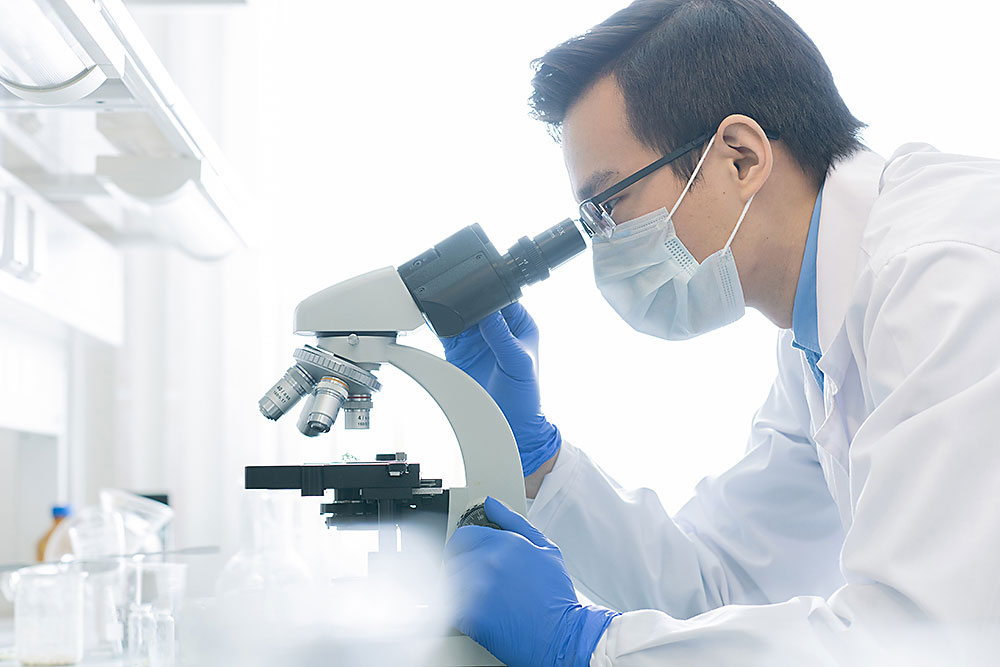
Times are about to change.
Technology that inactivates 99.9% of endotoxins

Times are about to change.
From Miura to the world.
Announcing the birth of
ETstera, a revolutionary new sterilization technology.
Endotoxins can be found everywhere, and must be controlled in medical environments.
Even so, there has never been a technology to inactivate 99.9% or more of endotoxins at 60℃ or less.*1
At MIURA, we decided to face this challenge head on.
Mixed gas technology uses hydrogen peroxide gas and ozone.
ETstera is capable of inactivating 99.9% or more of endotoxins*2.
It is great for people who need to eliminate endotoxins,
for preventing infections, in biotechnology, and advanced medical treatment.
ETstera makes it possible to create a highly sterile environment anywhere.
A new future from a new technology. Let's welcome it together.
*1 Reference: Kazunari Hosobuchi and Kenichi Tanamoto (1999). Inactivation of dry endotoxin by several sterilization methods. Bulletin of Tokyo Metropolitan Industrial Technology Research Institute No. 2.
*2 The inactive ratio differs depending on the bacterial species, amount applied, and differences in the object to be sterilized, such as surface materials and roughness.
These are pyrogenic toxins included in dead gram-negative bacteria. Conventional sterilization methods are unable to sufficiently inactivate endotoxins at low temperatures. For example, even if the bacteria are killed, endotoxins cannot be inactivated, meaning that they remain toxic. Even an extremely small amount of endotoxins making their way into the bloodstream can trigger a fever, and a large amount can result in multiple organ failure.
-
 Preventing the spread of infection
Preventing the spread of infectionPeople and things come and go around the world.
Hassle-free decontamination and sterilization can help us take back the days when we traveled with peace of mind. -
 Reproductive and regenerative medicine
Reproductive and regenerative medicineImprove task precision such as culturing while suppressing aberrant cell growth. Achieve greater research and development results.
-
 Area decontamination
Area decontaminationReduce residual toxicity while improving sterilization effects.
More space where you can feel at ease makes for more comfortable living. -
 Suppress drug-resistant bacteria
Suppress drug-resistant bacteriaDrug resistance is a problem that causes medicine to be less effective.
Creating a living environment that minimizes drug-resistant substances can help suppress the prevalence of drug-resistant bacteria.
ETstera is a low-temperature sterilization technology that will change the world.
It brings us hope for a brighter future.
concept
Sterilization that fuses low temperatures and mixed gases
The most prominent feature of ETstera is its sterilization method using mixed gas processing technology. Adding a small amount of ozone to hydrogen peroxide gas to promote oxidation improves sterilization effects. This method inactivates 99.9% of endotoxins, something that was not possible with conventional sterilization methods. Compared with high-temperature sterilization, sterilization at low temperatures is not limited to certain items, and offers significantly less hassle and lower costs than conventional sterilization methods.
From non-heat resistant products made of resins and plastics to technology and tools used on people. Because ETstera can be used to inactivate endotoxins in a variety of situations, it is suitable for domains that demand a highly sterile environment.
Learn about ETstera in an easy-to-understand video!
-
A low-temperature sterilization technology
that will change the world!A variety of sterilization technologies have been developed around the world. Sterilization cost is also a major factor. Although existing, mainstream high pressure sterilization is capable of inactivating up to 89% of endotoxins, ETstera can inactivate 99.9% or more of endotoxins at a low temperature and low cost.
-
Gentle on both equipment and operators!
Although hydrogen peroxide is effective in low-temperature sterilization, problems lie in the toxicity of residues. ETstera solves the problem using mixed gas processing technology that includes ozone. Significantly reducing the volume of hydrogen peroxide solution not only reduces residual toxicity, but also succeeds in suppressing degradation of items to be sterilized. It is gentle on equipment and reduces health risks to workers.
Reduced residual hydrogen peroxide ETstera can reduce residual toxicity!
ETstera can reduce residual toxicity!